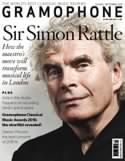Texte paru dans: / Appeared in: |
||||
|
Outil de traduction (Très approximatif) |
||||
|
Reviewer: David Vickers
Opus Arte’s DVD of Gilbert Deflo’s staged production of Orfeo at Barcelona’s Gran Teatre del Liceu was given a thorough assessment by Jonathan Freeman‑ Attwood in these pages 13 years ago. However, this remixed and remastered audio‑only version on hybrid SACD is the latest in the series of lavish reissues produced by Jordi Savall’s own label Alia Vox, and enables us to concentrate solely on musical aspects. The beautifully designed, lavishly illustrated book also provides plenty of reading matter, including an insightful foreword by Savall, essays by Monteverdi experts John Whenham and Paolo Fabbri and classicist Montserrat Camps Gaset, photographs of the Barcelona production and pages from Monteverdi’s edition of the score (published in 1609).
Savall’s conception of this ‘musical fable’ is boldly kaleidoscopic. Les Concerts des Nations field an enormous group of 12 continuo players, including three keyboardists, four strummers/pluckers (all of whom switch between different types of lute) and four bowed string bass instruments – separate from those who play the bass instruments in the ‘orchestra’. The introductory Toccata is unusually shaded in its range of dynamics and flexible pulse, and expressive malleability is also a characteristic of the late Montserrat Figueras’s intimate singing of La Musica’s prologue. Sara Mingardo’s emotive Messenger, Antonio Abete’s snarling Charon, Adriana Fernández’s meek Proserpina, Daniele Carnovich’s compassionate Plutone and Arianna Savall’s sorrowful Euridice all make effective short contributions. Furio Zanasi sings the title‑role more sweetly than he does on Concerto Italiano’s idiosyncratic recording (Naïve, 11/07); his baritonal passaggi are admirably supple in ‘Possente spirto’, during which ritornellos are played vibrantly by various instrumentalists. However, on the whole Zanasi’s characterisation is somewhat effortful in comparison to tenors whose naturally higher tessituras and eloquent deliveries of Striggio’s poetry more fully convey Orfeo’s enraptured emotions. The full choral textures used in ‘Vieni Imeneo’ and ‘Lasciate i monti’ make polyphonic details seem lugubrious, and to the latter Savall adds recorders and percussion copiously. Similarly, the concluding Moresca sounds like a vivacious crossover between world music and the Italian Renaissance. Savall’s ideas may not satisfy everyone, but there’s never a hint of formulaic complacency, and this live performance is an engaging alternative view to experience alongside the best studio versions.
|
||||
|
||||
|
|
|
|||
|
Cliquez l'un ou l'autre
bouton pour découvrir bien d'autres critiques de CD |
||||

/8435408099110.jpg)


